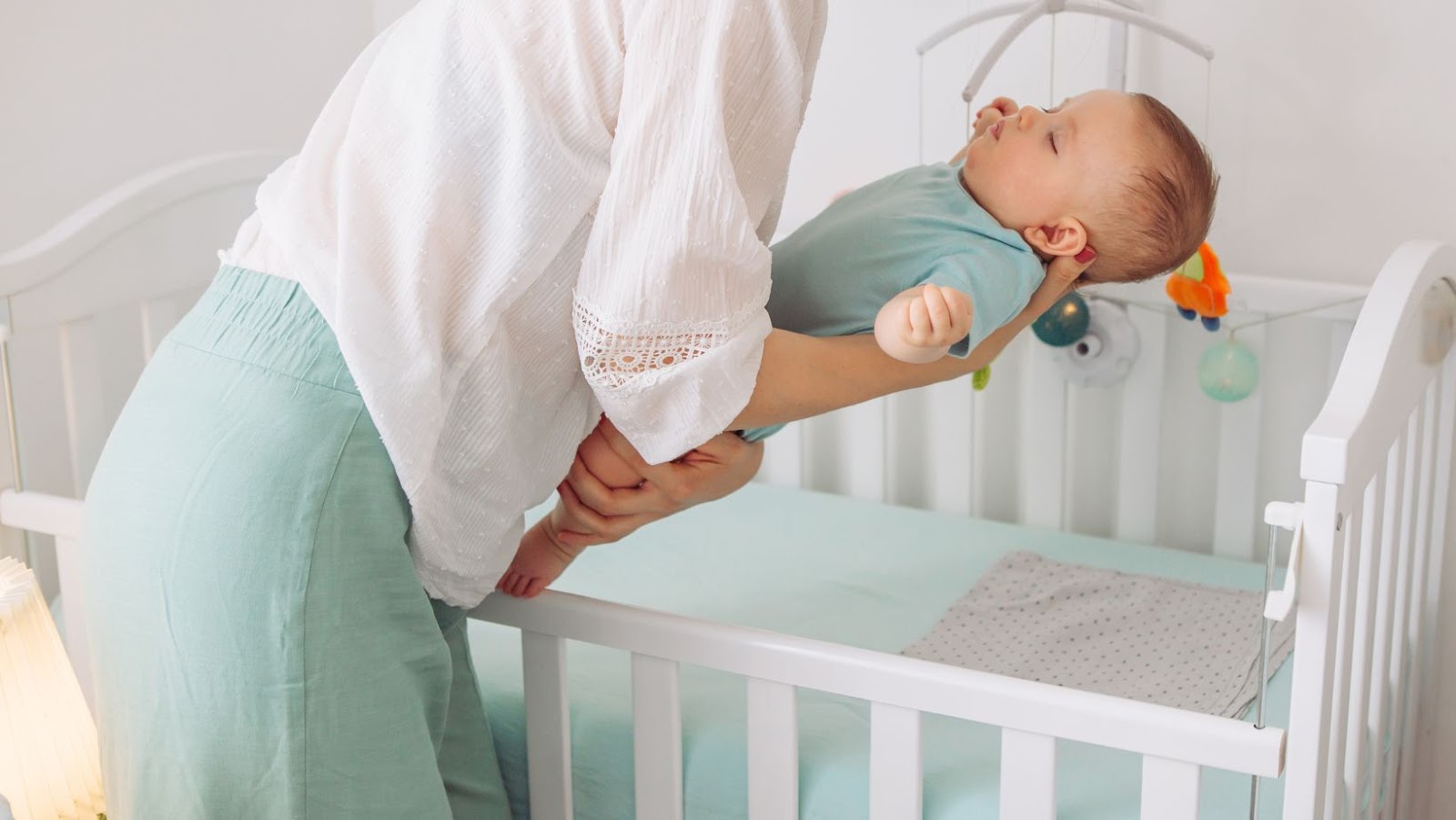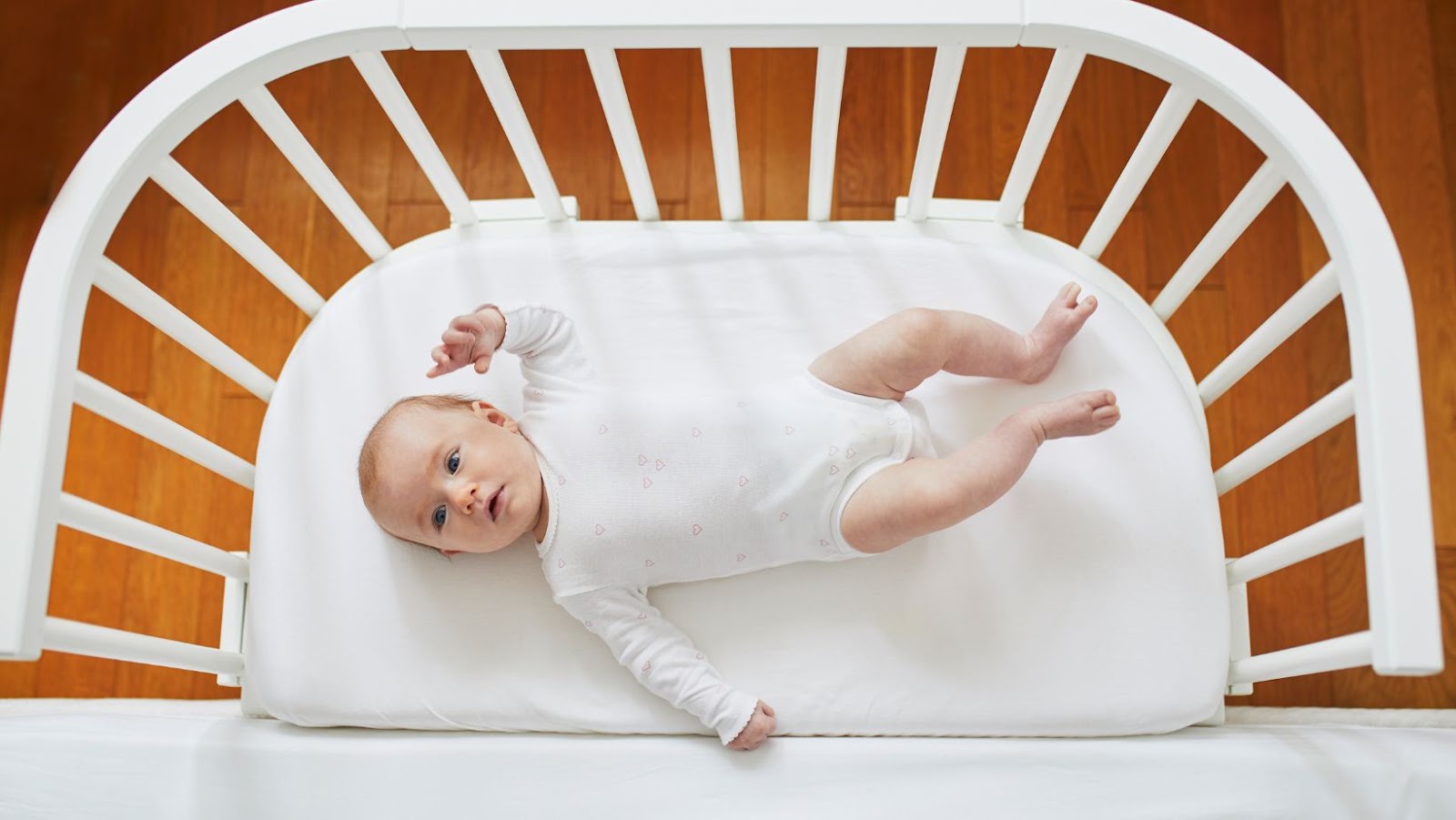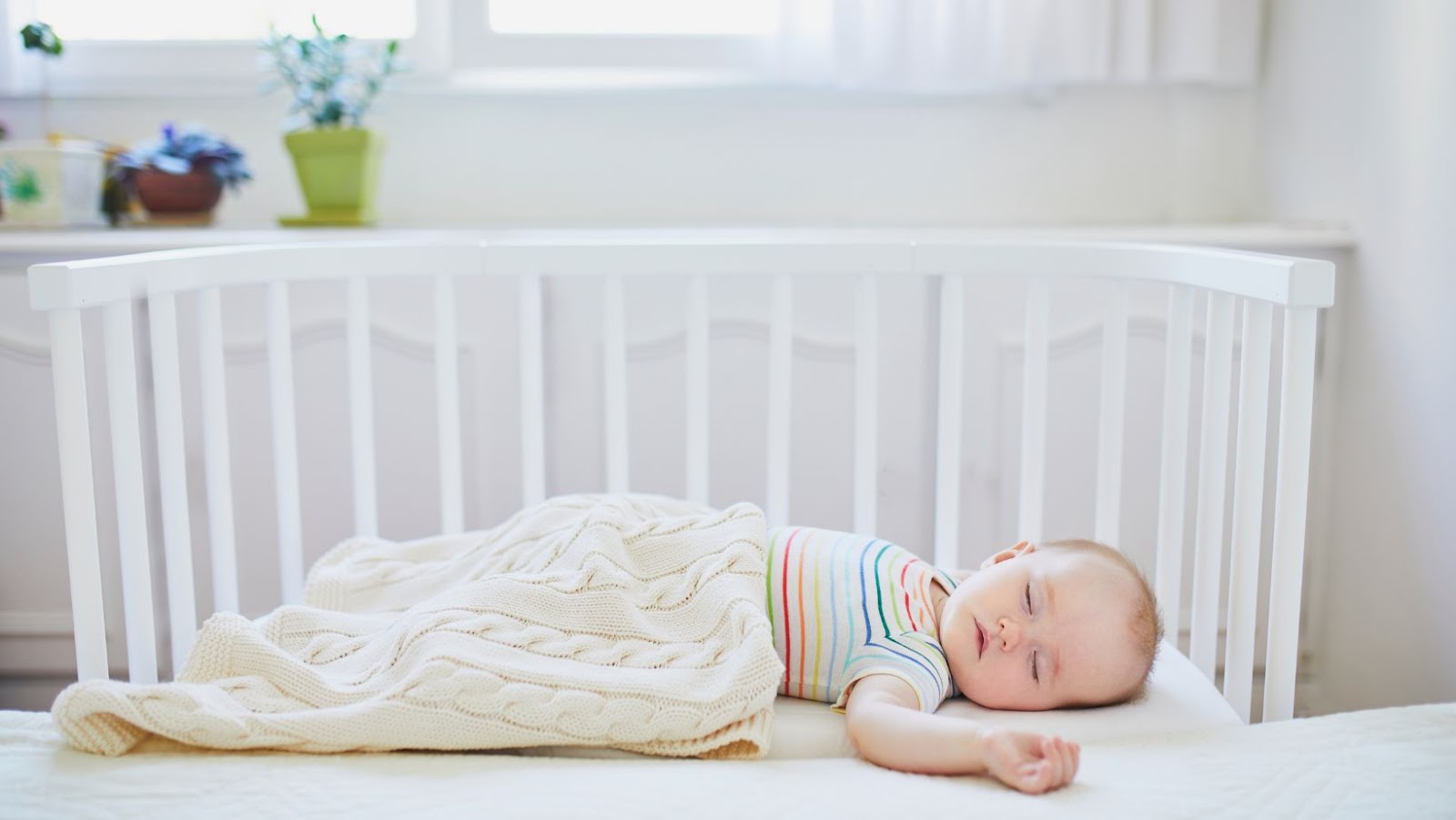Making the transition from co-sleeping to sleeping in a crib can be a significant challenge for both parents and babies. Co-sleeping has many benefits, such as promoting bonding and making breastfeeding or baby formula feeding easier, but there comes a time when the baby needs to sleep alone. Fortunately, with some patience and consistency, it’s possible to get your baby to sleep in a crib after co-sleeping.
One effective way to encourage your baby to sleep in a crib is to start with a consistent bedtime routine. This routine should include a bath, a lullaby, and cuddles. By establishing a pattern of cues that signal bedtime, you can help your baby feel more comfortable and secure in their new sleeping environment. Additionally, make sure your baby’s crib is in a quiet and dark room, with a comfortable temperature and a firm mattress.
Another technique is to slowly transition your baby to the crib. Start by placing the crib next to your bed and gradually move it away each night until it’s in its permanent location. You can also place a piece of clothing that smells like you in the crib to provide comfort and a feeling of closeness. If your baby wakes up during the night, try not to immediately pick them up and take them to bed with you. Instead, soothe them with your voice, a gentle touch, or a pacifier. By doing this, your baby will eventually learn to self-soothe and fall back asleep on their own.
Keep in mind that this transition may take some time and effort, but with consistency and patience, you can get your baby to sleep in a crib after co-sleeping. Remember that every baby is different, and what works for one might not work for another. Be prepared to adjust your approach as necessary and seek guidance from your pediatrician if you have any concerns.

How to Get Your Baby to Sleep in Crib After Co Sleeping
Co-sleeping with your baby can be a wonderful bonding experience, but at some point, the time will come when you may want to transition your little one to sleep in their own crib. Whether it’s because you and your partner want more space or because you believe it’s time for your baby to learn to sleep independently, the transition can be a challenge. In this section, I’ll provide you with some actionable tips on how to get your baby to sleep in a crib after co-sleeping.
- Start the transition gradually – It’s understandable that both you and your baby may find it difficult to go from co-sleeping to sleeping alone in a crib. You can make the transition smoother and less stressful by taking it slow. Start by putting your baby in the crib for naps or part of the night, then gradually increase the time they spend in the crib.
- Create a sleep-conducive environment – Your baby may have gotten used to sleeping close to you in bed, so it’s important to make their crib a comfortable place to sleep. Consider adding a white noise machine, blackout blinds, or a comfortable and safe mattress to the crib. Additionally, try putting on a shirt that you’ve worn in the crib to give your baby a sense of comfort and familiarity.
- Establish a consistent bedtime routine – Babies thrive on consistency, so having a regular bedtime routine can help prepare your baby for sleep. Establish a calming routine that includes a warm bath, reading a book, and snuggling before putting your baby in the crib.
- Consider using transitional objects – Transitional objects such as a stuffed animal or a blanket can help your baby feel secure when making a move to sleeping alone in the crib. However, make sure the object is safe for your baby to have in their crib.
- Be patient and persistent – As with any major change, it may take some time for your baby to adjust to sleeping in their own crib. Be consistent, patient, and positive throughout the process. Remember to celebrate each milestone your baby accomplishes.
In conclusion, transitioning from co-sleeping to a crib is not an overnight process. It requires patience, consistency, and gradually taking small steps toward independence. By creating an environment conducive to sleep, establishing consistent bedtime routines, and being patient, you can make the transition from co-sleeping to crib a successful and positive experience for you and your baby.

Creating a Comfortable Sleeping Environment
Now that you’ve decided to transition your baby from co-sleeping to sleeping in their own crib, it’s important to create a comfortable sleeping environment to help ease the transition.
- Invest in a Good Crib: A comfortable crib is key to ensuring that your baby is able to sleep soundly. Choose a safe and sturdy crib that meets the latest safety standards. Also, consider investing in a high-quality mattress with a firm surface that will provide adequate support.
- Choose Appropriate Bedding: Opt for breathable and lightweight bedding that fits the crib snugly. Avoid using loose blankets or pillows, which could pose a suffocation risk.
- Regulate Temperature: Keep your baby’s room at a comfortable temperature, around 68 to 72 degrees Fahrenheit. Use a fan, if necessary, to regulate the temperature and create a soothing white noise.
- Create a Soothing Atmosphere: Create a peaceful and calming atmosphere in your baby’s room by dimming the lights and using relaxing music, soft lighting, or a sound machine to help soothe your baby to sleep.
- Stick to a Routine: Establish a consistent bedtime routine that signals to your baby that it’s time to sleep in their crib. This could include a warm bath, a gentle massage, or a bedtime story to help your baby relax and wind down.
Remember, transitioning your baby from co-sleeping to sleeping in their own crib may take time, so be patient and remain calm. With a little patience and perseverance, you’ll be able to establish healthy sleep habits, and your baby will be sleeping soundly in their own crib in no time.

Implementing a Bedtime Routine
Creating a consistent bedtime routine is crucial to help your baby transition from co-sleeping to sleeping in a crib. Here are several steps that you can take to ensure success:
- Establish a Consistent Bedtime: Set a fixed time to put your baby to bed every night. This will help their body clock adjust to the new sleeping arrangement. Ideally, bedtime should be around 7 PM to 8 PM.
- Dim the Lights: About 30 minutes before bedtime, turn down the lights to create a calming atmosphere. This will signal to your baby that it’s time to wind down.
- Give a Soothing Bath: A warm bath is a great way to relax your baby before bed. The soothing water will help them feel calm and sleepy.
- Read a Story: Reading a story is a great way to help your baby unwind and settle down. It’s also a great bonding opportunity between you and your baby.
- Create a Comfortable Sleep Environment: Make sure your baby’s crib is comfortable and free of any obstructions. Use soft, breathable bedding, such as a muslin swaddle blanket or a light baby sleeping bag.
- Provide Soothing Sounds: Playing soft, calming music or using a white noise machine can help your baby fall asleep faster and stay asleep longer.
By implementing these steps and being consistent with them, you’ll signal to your baby that it’s time to sleep in their crib. Remember, it might take some time for your baby to adjust to the new sleeping arrangement and routine. Be patient, and stay positive. With time and consistency, your baby will learn to love sleeping in their crib.
Conclusion
It can be difficult to transition your baby from co-sleeping to sleeping in the crib, but with patience, consistency, and a few helpful tips, it can be done successfully. Here are some key takeaways to keep in mind:
- Start early: The earlier you begin transitioning your baby to the crib, the easier it will be for them to adjust.
- Set a routine: Establish a consistent bedtime routine to help your baby associate sleep with a certain set of actions.
- Use safety precautions: Be sure to follow safe sleep guidelines and take necessary precautions to create a safe sleeping environment for your baby.
- Gradual separation: Start by slowly moving your baby’s co-sleeper farther away from your bed and eventually into the crib.
- Offer comfort: Use your presence, a pacifier, or a lovey to help soothe your baby as they adjust to sleeping in the crib.
By following these steps and remaining patient, your baby will eventually adjust to sleeping in the crib, and you can rest easy knowing they are getting the safe and healthy sleep they need.
Jennie Powell is the co-founder of Conversations With Bianca, a leading mom blog. Her creative writing style sparks reader-friendly and engaging content that’s adored by parents and bloggers. Jennie loves to empower and educate moms. This has helped Conversations With Bianca gain a loyal following.
Jennie’s unique voice is seen in her blog posts. She gives insight into the everyday lives of moms and offers helpful parenting info. Her commitment to providing relevant content distinguishes her from other bloggers in the parenting niche.
